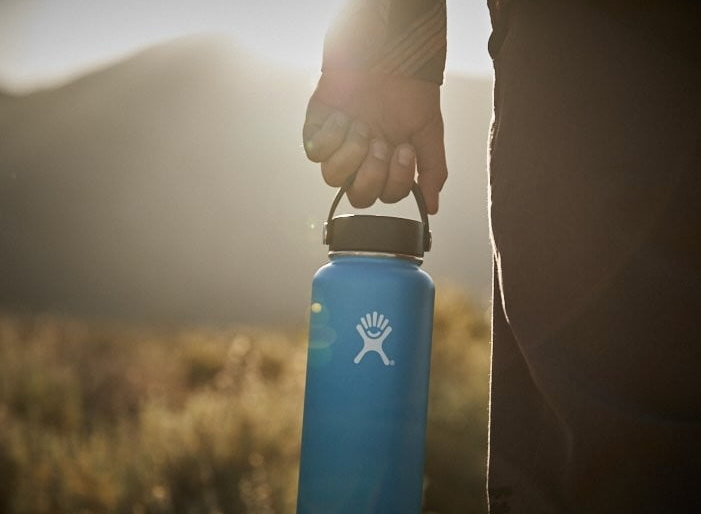The 2023 climbing season on Mount Everest was marked by a tragic surge in fatalities, with the term “Mount Everest deaths 2023” becoming all too familiar. As climbers from around the world attempted to conquer the world’s highest peak, numerous factors contributed to this alarming increase in casualties.
Climate change and overcrowding have intensified risks for even seasoned mountaineers, while inexperienced climbers and guides further compound these dangers. In addition to human loss, there is growing concern about the environmental impact of climbing popularity on Everest.
In this blog post, we will delve into the causes behind Mount Everest deaths 2023 and explore recommendations for ensuring safety and preserving our planet’s natural wonders for future generations.
Mount Everest Deaths in 2023
This year has proven to be deadlier than 2023 when 11 people died on the mountain. Among those who lost their lives this spring were Jason Kennison, Pieter Swart, and three Nepalese sherpas.
Climbers who perished during the season
- Jason Kennison: A seasoned climber from Australia succumbed to altitude sickness while descending from Camp IV after his summit push was unsuccessful.
- Pieter Swart: The South African mountaineer suffered a fatal fall near Camp III due to exhaustion and deteriorating weather conditions.
- Nepalese Sherpas: Three experienced sherpas tragically lost their lives during separate incidents throughout the climbing season. One of them, Pemba Tshering Sherpa, fell into a crevasse while assisting climbers at high altitudes.
In addition to these fatalities, several other climbers went missing or faced life-threatening conditions during their expeditions. Moldovan climber Victor Brinza died at base camp after developing acute mountain sickness (AMS), while an American operator for International Mountain Guides reported that one of its clients had gone missing in the treacherous Death Zone above 26,000 feet.

Overcrowding and Inexperienced Climbers
The increasing number of deaths and accidents have raised concerns among experts about overcrowding issues as well as inexperienced climbers attempting to conquer the world’s highest peak without proper preparation or guidance from qualified guides. According to data from Himalayan Database, the number of climbers attempting to summit Everest has been steadily increasing over the years, with a record-breaking 891 successful summits in 2023.
Many have attributed this surge in popularity to an excessive number of permits being issued by Nepal’s Tourism Department. In fact, during the spring climbing season of 2023 alone, 381 permits were granted for foreign climbers. This overcrowding not only creates dangerous traffic jams on narrow trails but also puts immense pressure on limited resources and infrastructure at high altitudes.
The consequences of these issues are evident in the tragic stories that unfolded throughout the 2023 climbing season. For instance, Pieter Swart’s death was partially blamed on his decision to continue ascending despite signs of exhaustion and deteriorating weather conditions – a choice that may have been influenced by concerns about losing valuable time due to overcrowding near summit points.
Conclusion
As Mount Everest continues to draw thrill-seekers from around the world each year, it is crucial for both aspiring mountaineers and regulatory authorities alike to prioritize safety measures and responsible practices in order to minimize risks associated with scaling such formidable heights. Organizations such as the Nepal National Mountain Guide Association are striving to raise safety standards and provide better training for climbers; however, more steps need to be taken in order to avert any potential catastrophes on Mount Everest.
Overcrowding and inexperienced climbers attempting to conquer the world’s highest peak without proper preparation or guidance from qualified guides have raised concerns among experts about safety measures.
Climate Change and Overcrowding as Contributing Factors
As the popularity of climbing Mount Everest continues to rise, experts have attributed many of these deaths in 2023 to climate change and overcrowding due to an excessive number of permits being issued. The impact on both the environment and climbers’ safety is becoming increasingly concerning.
Impact of Climate Change on Climbing Conditions
Climbing Everest has become more difficult due to the climate-induced changes in weather patterns. Melting glaciers cause unstable terrain, increasing the risk of avalanches or rockslides that can be deadly for those ascending or descending Everest. Furthermore, warmer temperatures lead to a shorter window during which it is safe for climbers to attempt summiting Mt Everest.
Excessive Permit Issuance Leading To Overcrowding
In recent years, Nepal’s tourism department has been issuing a record number of permits, resulting in dangerous overcrowding on the mountain. In 2023 alone, they granted over 400 permits – leading some mountaineers like Adrian Ballinger from Alpenglow Expeditions to question whether this decision prioritizes revenue generation over climber safety.
- Negative Impact: With more people attempting climbs each year than ever before – including inexperienced individuals who may not fully understand risks associated with high-altitude expeditions – there are increased chances of accidents occurring during summit pushes.
- Long Queues: Overcrowding on Everest can lead to long queues at critical points along the route, such as the notorious Hillary Step. These delays force climbers to spend more time in the “death zone” above 26,000 feet where oxygen levels are insufficient for human survival, increasing their risk of developing life-threatening conditions like acute mountain sickness or high-altitude cerebral edema (HACE).
The combination of climate change and overcrowding has led many experienced mountaineers to call for stricter regulations surrounding permit issuance and better education about climbing risks. Companies like Mountain Madness and Alpine Ascents International emphasize proper training before attempting Everest climbs – a crucial step towards mitigating potential dangers faced by those who venture onto this iconic peak.
A Shift in Perception: From Experienced Climbers’ Playground To Tourist Destination?
An additional concern is that Mount Everest is now seen as a tourist destination for thrill-seeking individuals rather than experienced climbers only. This shift in perception leads to increased human activity at base camp causing environmental pressure on the mountain. The need for responsible tourism practices becomes paramount if we want future generations to experience this majestic peak without further endangering lives or compromising its pristine environment.
Experts attribute the deaths on Mount Everest in 2023 to climate change and overcrowding due to excessive permits issued by Nepal’s tourism department. Climate change has led to unpredictable weather patterns, melting glaciers causing unstable terrain, while overcrowding results in long queues at critical points along the route leading climbers spending more time in the “death zone” increasing their risk of developing life-threatening conditions like acute mountain sickness or high-altitude cerebral edema (HACE).
Altitude Sickness – A Major Cause of Fatalities
Altitude sickness is no joke, especially on Mount Everest. Moldovan climber Victor Brinza died during the 2023 climbing season due to this life-threatening condition. Tragically, Victor Brinza was not the only victim of altitude sickness on Mount Everest in 2023. Altitude sickness was partially responsible for several deaths, including two sherpas’.
Symptoms and Dangers Associated with Altitude Sickness
Altitude sickness, also known as acute mountain sickness (AMS), can cause mild symptoms like headaches and dizziness or more severe symptoms like shortness of breath and loss of consciousness. If left untreated, it can progress into more serious conditions like High-Altitude Cerebral Edema (HACE) or High-Altitude Pulmonary Edema (HAPE), both potentially fatal.
- Mild AMS: Headache, fatigue, dizziness, nausea/vomiting
- Moderate AMS: Severe headache unrelieved by medication; persistent vomiting; difficulty walking straight
- HACE: Confusion/disorientation; hallucinations; inability to walk straight even when supported
- HAPE: Shortness of breath at rest; cough producing frothy sputum
Importance of Acclimatization
To minimize the risk of altitude sickness, climbers must prioritize acclimatization. This involves gradually ascending to higher altitudes and allowing the body time to adjust before continuing upward. Ascending to greater heights during the daylight hours and descending for rest at night is an accepted strategy among Everest mountaineers.
The Nepal National Mountain Guide Association recommends spending several days at base camp (17,598 feet) before beginning an ascent and incorporating acclimatization hikes into their itinerary. It’s essential that climbers pay attention to their bodies and retreat quickly if any signs of altitude illness are present.
Inexperienced climbers often underestimate the dangers associated with high-altitude mountaineering or feel pressured by tight schedules or financial investments in their expedition. However, understanding that proper acclimatization is essential can be lifesaving when attempting peaks like Mount Everest.
Altitude sickness is a major cause of fatalities on Mount Everest, with several deaths during the 2023 climbing season attributed to this life-threatening condition. Symptoms range from mild headaches and dizziness to more severe conditions like High-Altitude Cerebral Edema (HACE) or High-Altitude Pulmonary Edema (HAPE), both potentially fatal. Proper acclimatization is essential for minimizing the risk of altitude sickness, involving gradual ascents and allowing time for adjustment before continuing upward.
Inexperienced Climbers Increasing Risks
Multiple factors contribute to the increasing risks on Mount Everest expeditions, including inexperienced climbers and guides. Overcrowding and pushing during challenging ascents also pose dangers.
Dangers posed by unprepared mountaineers
The 2023 climbing season saw a surge in novice climbers attempting to conquer the world’s highest peak, many of whom lacked adequate preparation and experience. This influx of inexperienced mountaineers led to several incidents that put both themselves and others at risk. For example, the tragic death of Moldovan climber Victor Brinza was attributed to his lack of high-altitude experience and insufficient acclimatization before embarking on his Everest climb.
- Lack of physical fitness: Many amateur climbers underestimate the physical demands required for an Everest expedition, resulting in exhaustion and potential life-threatening conditions like altitude sickness.
- Poor decision-making: Inexperience can lead to poor judgment calls when faced with difficult situations on the mountain, putting oneself and fellow climbers in danger.
- Inadequate gear: Novice mountaineers may be ill-equipped for extreme weather conditions encountered at high altitudes, further increasing their vulnerability during an ascent.
The role of inexperienced guides in accidents
Some guiding companies prioritize profit over safety, hiring underqualified local staff who lack the necessary skills and experience to lead a successful Everest expedition. According to the Himalayan Database, inexperienced guides have been involved in numerous accidents, leading to fatalities on the mountain.
For instance, during the 2023 climbing season, an incident involving a stranded climber highlighted how unprepared some guides can be when faced with emergencies. The climber’s guide had abandoned him after he developed altitude sickness, leaving him helpless until another team of climbers came to his rescue.
Choosing reputable guiding companies
To minimize risks associated with inexperienced climbers and guides, it is essential for aspiring mountaineers to choose reputable guiding companies that prioritize safety and employ experienced staff. Companies like Alpine Ascents, Madison Mountaineering, and Summit Climb are known for their commitment towards ensuring clients’ well-being throughout expeditions.
The increasing number of inexperienced climbers attempting to conquer Mount Everest is leading to a surge in accidents and fatalities. Poor decision-making, inadequate gear, lack of physical fitness, and unprepared guides are all contributing factors that can be mitigated by choosing reputable guiding companies prioritizing safety over profit.
Notable Achievements Amidst Tragedy
Despite concerns about overcrowding and fatalities during the 2023 climbing season, there were still some remarkable achievements on Mount Everest. Nepal’s Pasang Dawa Sherpa became the first double above-the-knee amputee to reach the summit, while veteran climber Kami Rita Sherpa broke his own record with his 25th ascent. Additionally, an all-women team from India successfully scaled Everest, a major milestone for women’s empowerment in sports.
Inspiring Stories from Successful Summit Attempts
- Pasang Dawa Sherpa: This double amputee’s incredible feat serves as a testament to human resilience and determination in overcoming challenges.
- Kami Rita Sherpa: With his 25th ascent, Kami Rita solidified his status as one of history’s greatest mountaineers.
- All-Women Team from India: This group’s successful climb highlights the importance of gender equality in sports.
While it’s important to celebrate these successes, we must not forget the risks associated with climbing the world’s highest peak. The recent deaths have sparked debates within the climbing community, calling for stricter regulations on permits issued by Nepal’s tourism department. It’s crucial to address overcrowding issues and ensure safety measures for both experienced and novice climbers.
Importance of Preparation and Training for Climbers
Ascending Mount Everest, the world’s highest peak, is a desire for numerous adventure-lovers; yet success on such an endeavor necessitates adequate preparation and training. Consequently, to successfully summit Mount Everest and avoid potential hazards along the way, it is essential to prepare and train thoroughly. Gradually gaining experience on lower peaks is crucial to ensure success while minimizing potential dangers faced during expeditions.
Recommended Steps for Preparing Physically and Mentally
- Fitness: Develop a comprehensive fitness program that includes cardio, strength training, flexibility exercises, and hiking with a weighted backpack. This will help you build the stamina needed to withstand the physical demands of climbing at high altitudes.
- Mental Toughness: Practice mindfulness techniques such as meditation or visualization to develop mental resilience in stressful situations like altitude sickness or extreme weather conditions.
- Nutrition: A well-balanced diet rich in nutrients is essential for maintaining energy levels during long climbs. Focus on consuming complex carbs, lean proteins, healthy fats, vitamins, and minerals necessary for optimal performance at high elevations.
- Educate Yourself: Learn about the risks associated with mountaineering by reading books or attending workshops hosted by experienced climbers from organizations like the Nepal National Mountain Guide Association (NMGA) or American Operator International Mountain Guides (IMG).
Gaining Experience Through Climbing Lower Altitude Mountains Before Attempting Everest
To minimize risks associated with climbing Mount Everest without prior experience at high altitudes, it’s essential to gain experience on lower peaks first. Gaining exposure to the high altitudes and sharpening one’s mountaineering abilities are crucial for reducing any potential dangers associated with attempting Mount Everest without prior experience.
Here are some suggestions for progressively challenging climbs:
- Trekking Peaks in Nepal: Begin with trekking peaks like Mera Peak (6,476m) or Island Peak (6,189m), which offer a taste of high-altitude climbing without the extreme technical challenges found on Everest.
- Aconcagua in Argentina: At 22,837 feet (6,959 meters), Aconcagua is the highest peak outside of Asia and provides an excellent opportunity to acclimatize at high altitudes while honing your mountaineering skills.
- Denali in Alaska: As North America’s tallest mountain at 20,310 feet (6,190 meters), Denali offers climbers a chance to test their abilities in harsh weather conditions similar to those encountered on Everest.
Remember, climbing Mount Everest is not a task to be taken lightly. The death toll and the number of dead bodies left on the mountain are a testament to the dangers of climbing without proper preparation and training. So, take your time, gain experience, and climb safely.
To climb Mount Everest safely, proper preparation and training are crucial. This includes developing physical fitness, mental toughness, nutrition knowledge, and education on the risks associated with mountaineering. Climbing lower altitude mountains before attempting Everest is also recommended to gain experience and acclimatize to high altitudes.
FAQs in Relation to Mount Everest Deaths 2023
How many people died on Everest in 2023?
In 2023, 11 climbers lost their lives during the Mount Everest climbing season due to altitude sickness, exhaustion, and accidents caused by overcrowding and inexperienced climbers.
How many climbers were on Everest in 2023?
Over 800 permits were issued by Nepal’s Tourism Department for foreign climbers alone in 2023, not including local guides and support staff.
What is the number one cause of death on Mount Everest?
Altitude sickness, also known as Acute Mountain Sickness (AMS), remains the leading cause of fatalities among mountaineers attempting to summit Mount Everest.
- Symptoms include headache, nausea, and dizziness.
- Dangers include cerebral edema or pulmonary edema.
- Treatment includes descent or oxygen therapy.
How many people die on Mount Everest each year?
On average, 6-10 deaths per year were recorded between 2000-2023 according to data from Himalayan Database, with the death toll increasing over time due to factors like climate change and overcrowding.
Conclusion
The 2023 Mount Everest deaths serve as a tragic reminder of the dangers of climbing the world’s highest peak, with factors such as climate change, overcrowding, altitude sickness, and inexperienced climbers contributing to the rising death toll.
To ensure safety and preserve the environment, permit issuance policies must be revisited, and proper preparation and training for climbers are necessary.
Despite the challenges, the 2023 season had notable achievements amidst tragedy, inspiring us to celebrate accomplishments amidst adversity.





